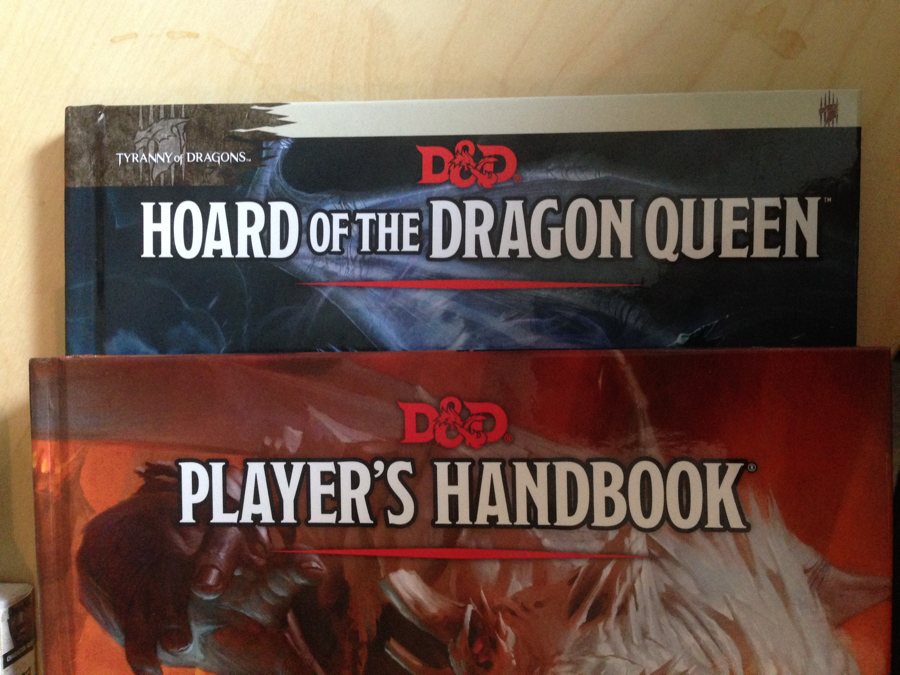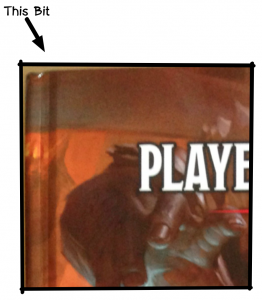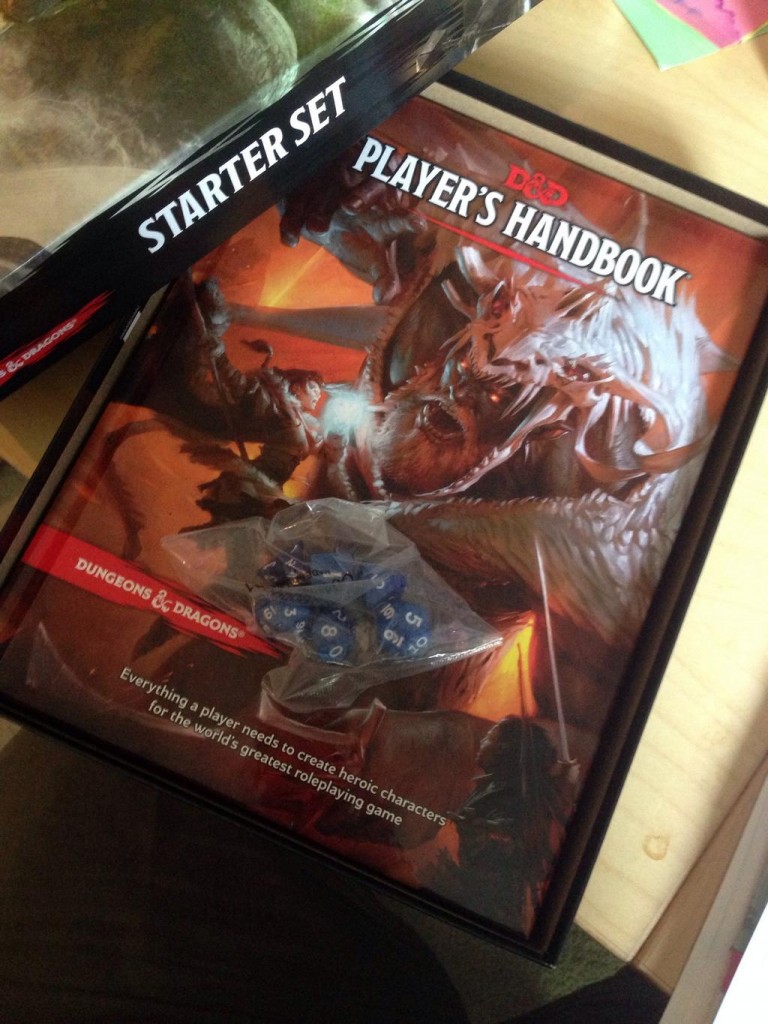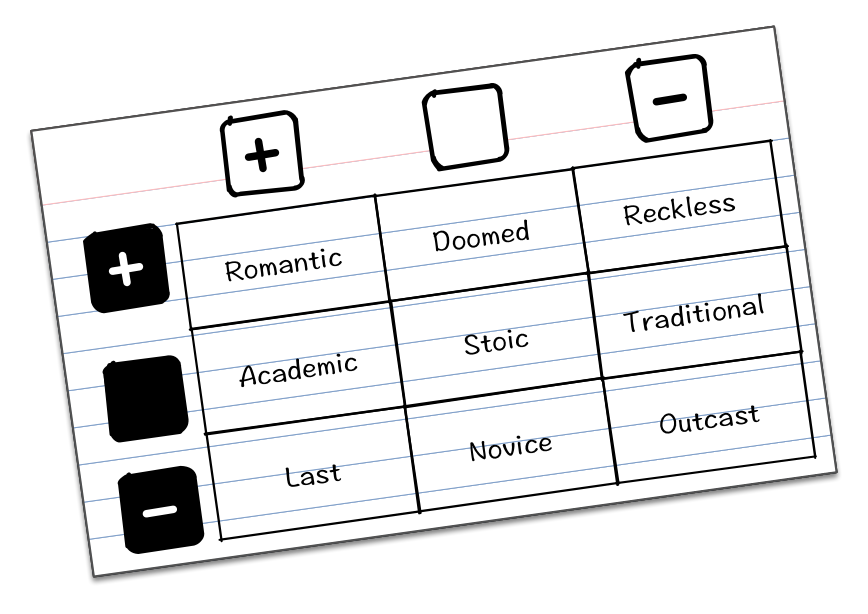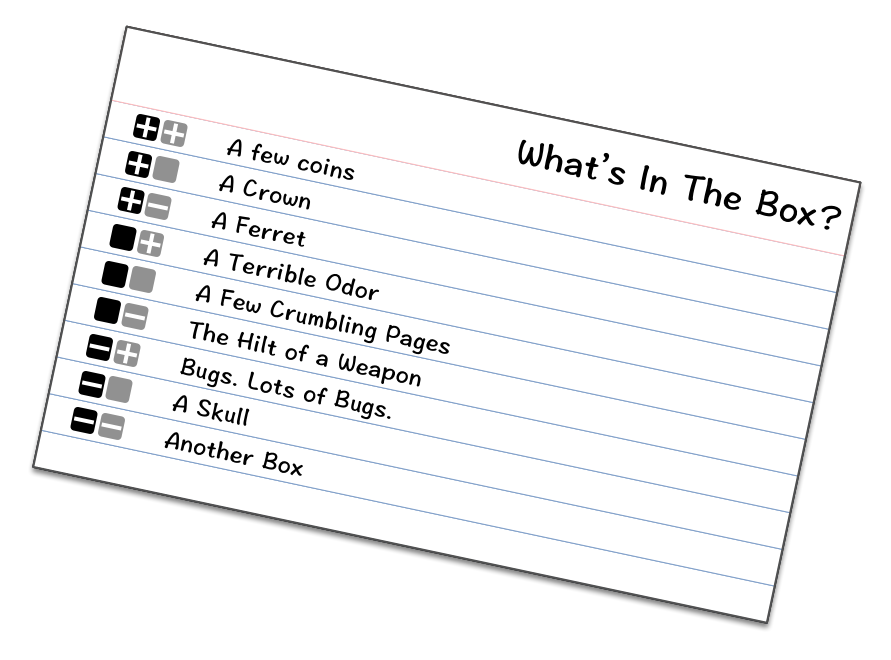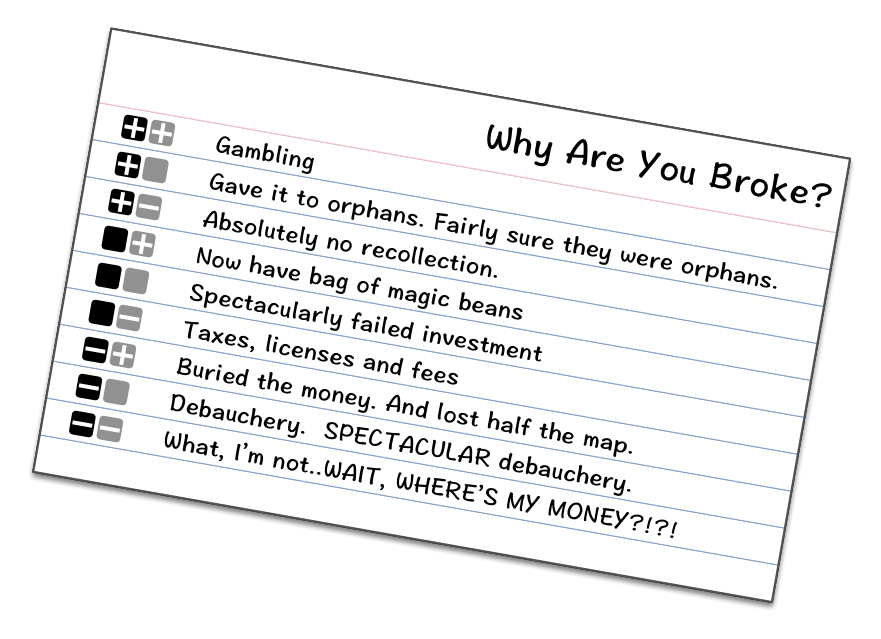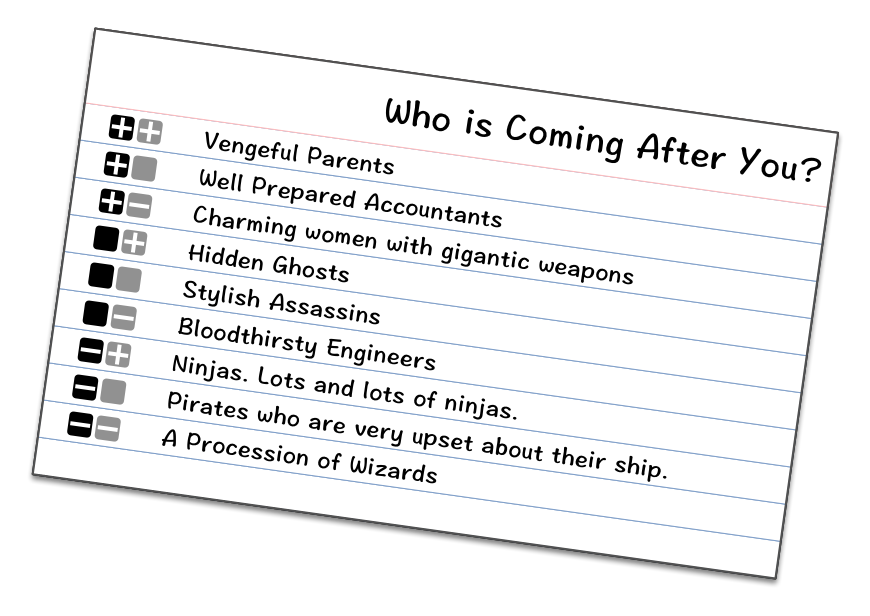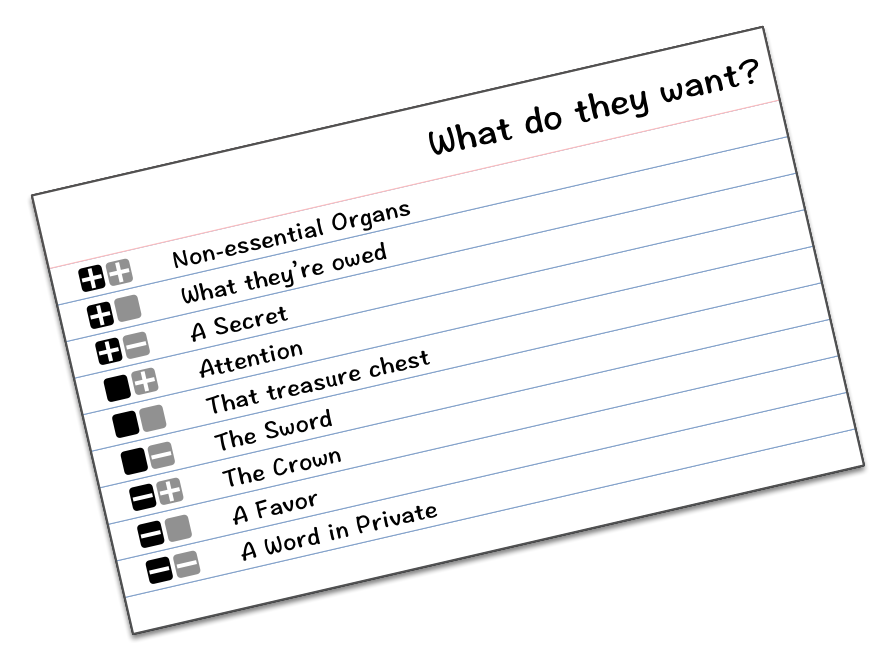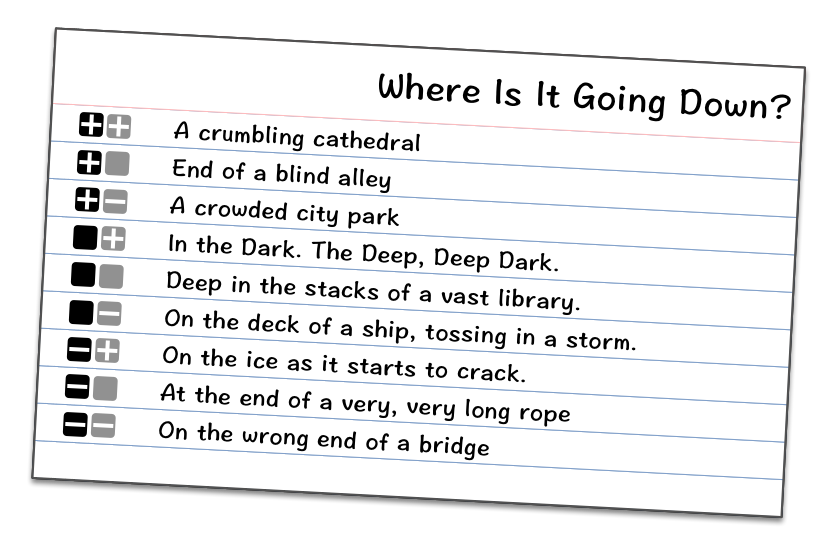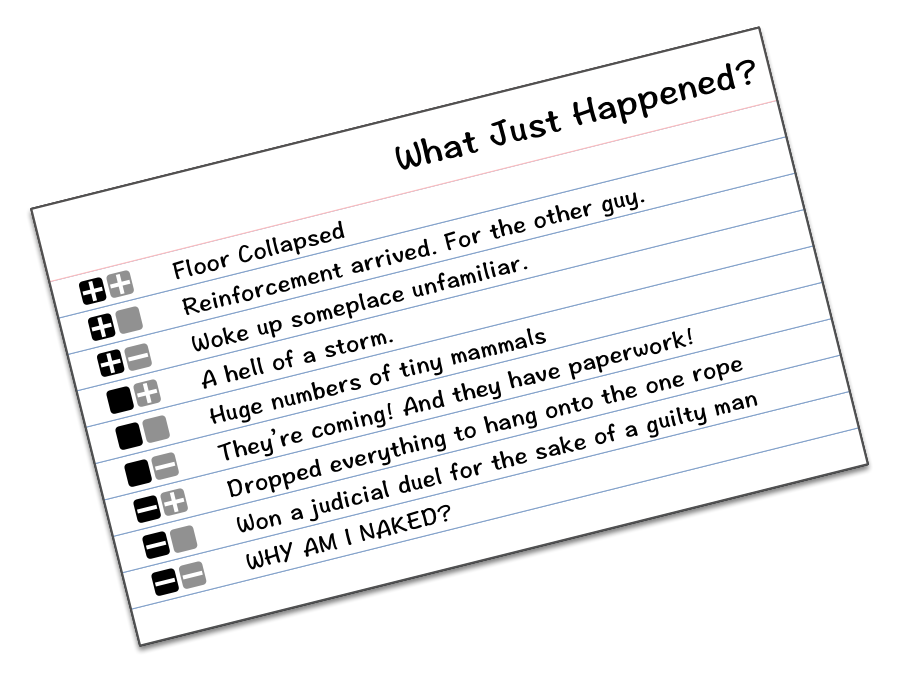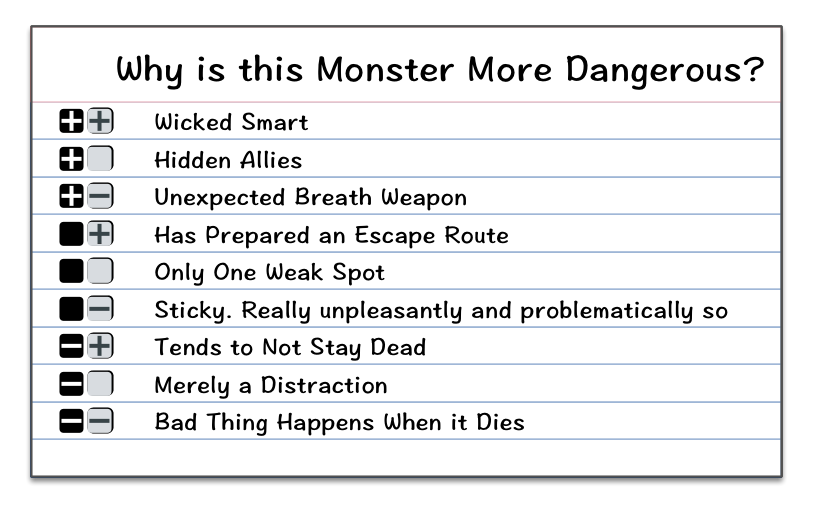So, apparently some people find the 5e halflings adorable, with their bloated heads and insectile legs, and I am happy for them, but the opening image of the personality and background chapter just creeps me out.
Anyway, a lot of this chapter is familiar from the basic rules (including the excellent-but-contentious-because-it’s-either-terrible-or-not-excellent-enough section on character sex) with expanded height and weight tables for the new races. Alignment descriptions are largely as they were, including the somewhat annoying description of lawful good (though it is also nice that they included “unaligned” so that we dont’ have to worry about oozes having an ethos).
There’s a bit I missed on the first readthrough which basically lays the idea of evil races at the feet of their creators (the evil gods). This has always been one of the sketchier ideas in D&D – it’s essential for many modes of play, but at the same time it’s disconcerting if you spend time thinking about it. That said, there is a bit of cleverness in making it an implicit setting element, because that makes it that much easier to change.
Languages are similarly by the book, though the inclusion of Dwarvish, Elvish and draconic alphabets (as ciphers, effectively) utterly delights the 14 year old me who would absolutely use such things to write secret notes.
Personal characteristics is a fun, if brief section explaining personality traits, ideals, bonds and flaws. The personality trait advice is actually quite good, but the other three suffer a bit from the fact that examples are found later in the chapter. More on that in a bit.
Inspiration is, of course, kind of a big deal. Obviously, as a guy coming from Fate, I look at it and see similarities to aspects, just as someone form another game would likely see similarities. It is possible to criticize the rules for being a bit loose in describing when inspiration should be rewarded, but I actually view this as a feature. This is the sort of thing best decided by the culture of the individual table. It also gets around the problems that Numenera encounters with GM intrusions, of offering enough structure to make the edge cases problematic.
Inspiration also has two very clever bits. First, the ability for players to give it to each other is great – lateral rewards are wonderful, and in my experience, the kind of player who gives their inspiration t other players is the kind who never goes long without having her own bucket refilled. Second, because you can’t stockpile it, the minmax behavior is to either get it and sit on it til you need it (if you don’t want to constantly earn it) or engage in a constant cycle of spending (or sharing) and earning. In practice, this means the guy who doesn’t want to chew scenery doesn’t have to, and the guy who wants to can, but not forever. That’s nicely done.[1]
That leads into backgrounds, and these are one of my favorite things in 5e, at least in part because they feel like 2e’s kits done right. The book includes the Acolyte, The Charlatan, the Criminal, The Entertainer, The Folk Hero, the Guild Artisan, the Hermit (who has an awesome picture), the Noble, the Outlander, the Sage, the Sailor, the Soldier (another awesome picture) and the urchin. Obviously, there will be many more of these in future products (especially ones tied into specific settings, I hope) but this is a good spread to begin with, expanded by the fact that a few of them offer variants (Spy, for example, is an alternative version of Criminal).
I am delighted that these backgrounds have a lot of mechanical potency, because that gives them weight in the player’s mind, because it’s an important choice for reasons beyond color. Consider: Each background gets you starting cash, a special ability (sages can research, criminals have contacts and so on), a tool proficiency and two skill proficiencies. Even setting aside the coolness of the special abilities (which are pretty cool), two skill proficiencies is nothing to sneeze at. Consider: you might get a skill proficiency from your race, and you’ll probably only get 2 skill proficiencies from your class (3 if you’re a ranger or bard, 4 if you’re a rogue), so two extra skills is a lot.
And that kind of mechanical weight makes the backgrounds feel like they matter, and that becomes important for a lot of character concepts which, historically, could only be addressed with multiclassing. If the Acolyte background had no mechanical weight and you wanted to make a fighter who had been a priest (or is still a lay priest) then it would be very unsatisfying and you’d want to take a level of cleric or two to make it ‘real’. But as presented, the backgrounds fill that niche quite effectively. My only regret is the absence of an arcane background (apprentice, perhaps) for all the grey mousers out there.
Backgrounds also offer a great tool to tie a group together. When we ran our first 3e game, everyone took one level of rogue (because it was twinky) and we used it as a unifying element of their character’s histories. Backgrounds would allow that trivially.
But what I also like is that backgrounds now make it much more fun and interesting to make a higher level character. Yes, technically backgrounds are supposed to represent what you did before you tarted adventuring, but if your game starts after first level, it can just as easily represent what they did after they started adventuring. Master swordsman who became a priest who is now getting draw back into a world of adventure? 7th level fighter with the acolyte background. Old wizard who left civilization to seek truth and instead found portents of doom? 10th level wizard with the hermit background.
So I largely feel like backgrounds are a great and powerful tool, so bear that in mind as I raise my single concern: including putting personal characteristics in the backgrounds rather than on their own seems weirdly constraining. I think I would have been happier if there had been some general ones presented, then ALSO some specific ones in the backgrounds, just to liberate the idea. As it stands, I see the utility of being able to roll up these characteristics[2] for the times when randomness is called for, but I admit that when I make my dudes, I’m likely to crib from other backgrounds, or make up my own, and I don’t feel that’s strongly supported.
But that is, ultimately, a very small complaint in the face of how much I like backgrounds.
The equipments chapter is largely what one might expect, with a few hidden curiosities. Plate mail is there, and crazy expensive, but most of the interesting stuff is in the adventuring gear, with little self contained rules nuggets for things like alchemists fire. A few standouts:
- Caltrops remain fiddly. This made me sad since I admit I would be all “Disadvantage when you’re moving around. Done” but I guess people really like the damage.
- Crowbar, on the other hand, is exactly what I want from a tool. Grants advantage when you use it.
- The preconfigured packs (not to be confused with kits) are awesome in concept, but such a pain to copy down that I’m uncertain that they offer much benefit. If anything, I’m more likely to use them as the basis for an abstract equipment system, but that’s just me.
- You want to read all the Kits and Tools. They are full of rules specifics you want to know. It’s important to remember that the tools list is also a potential proficiency list.
- Manacles seem oddly fragile
- Many starting characters can afford a mule. This is delightful.
- The lifestyle expenses are awesome, and also provide a nice context for what money is actually worth. If you live modestly, then you need to be bringing in 7gp a week. Round it up to 10gp and you can convrsationally sy that 10gp is a week’s wages for someone who’s doing ok (and nearly 3 months wages for someone in the slums). I love having enough information to understand what money means
- The trinket table? Still fun.
Chapter 6 is customization options, which is to say the optional rules for multiclassing and feats. I admit, when I started this book, I assumed I’d allow multiclassing (since it was such a key thing in 3e, and important in previous editions) but the more I read, the less I’m inclined to do so. Classes are very robust, backgrounds cover most story options, and that leaves only mechanical maximization, which is fun, but not compelling.
They definitely try to keep multiclassing from being abusive. Clear rules on proficiencies and stacking abilities like extra attacks, channel divinity and unarmored defenses). Unified spell progression, so you don’t get the weird spell slot stacking. And, notably, a lot of classes put key abilities at levels 2 or 3, so there’s less incentive to just sweep in and grab one level of a class to get all the best bits. Yet despite this, I am confident that there are abuses aplenty out there, and will be more as more classes and subclasses are introduced. So perhaps it’s just easiest to not open the door.
On the other hand, I will absolutely use feats. These are what I always wanted feats to be – large, sweeping statements about a character, not puzzle pieces to assemble into something that might someday be cool. They’re rare and potent (and they have to be, since they replace a stat bump[3]). My go to example is sharpshooter. Do you want to be a badass archer? Ok, take this feet – you ignore long range penalties as well as penalties from anything but full cover, and you can take –5 to an attack to do +10 damage. Bam. You’re an awesome archer. I love that clarity, and while I am happy there are not a lot of feats, it leaves me curious to see more of them (rather than leery).
They also introduce elements of play that might be uninteresting as broader rules, but work well as one offs. Like spell interruption? Take the mage slayer feat. Want to do some 4e/MMO-style tanking? Take the sentinel feat. Grappling? There’s a grappler feat. The fun thing about this model is that it takes a lot of rules that were historically fiddly and annoying and pushes them into the domain of the player who is interested in this kind of play. As a GM who has perpetually struggled with grappling rules, this delights me.
And with that, we wrap up chargen. Rules and spells are coming next, but I imagine (or hope) theyll be a bit less in depth.
- Also, I doubt I am the first to notice that having a point of inspiration is, effectively, a status (you are inspired or not) and that could almost certainly be used as a mechanical hook (such as having an ability work differently when the character is inspired.) ↩
- And, it’s worth noting, the background section is, effectively, an NPC generating system. Need a priest? Just take the acolyte, roll the characteristics and bam, you’re good. ↩
- Another subtle thing: this edition makes me entirely comfortable with the starting stat spreads not being up around 18. If characters start with high stats, there’s no decision to make when they get a stat bump, and they’ll just load up on feats, which defeats the purpose of them being a valuable tradeoff. ↩
